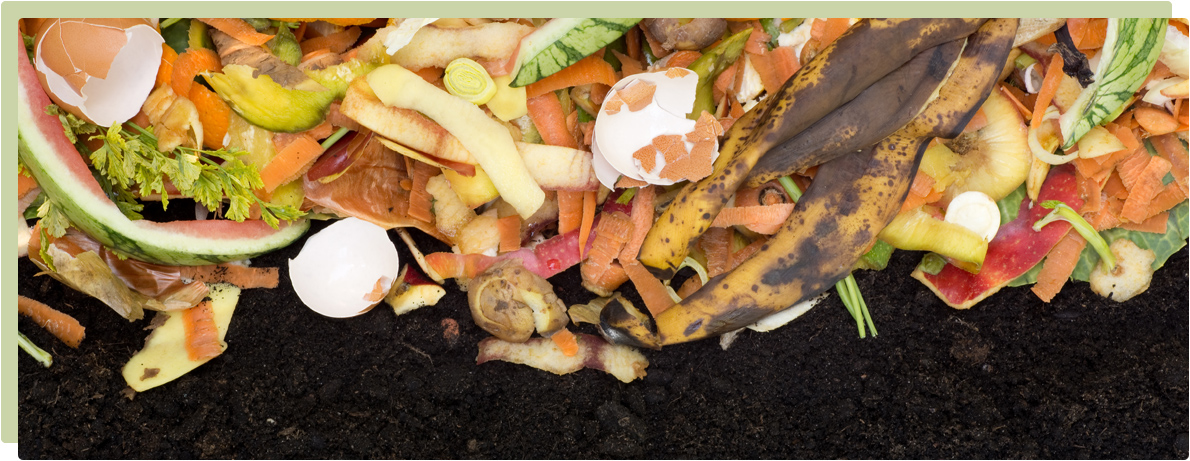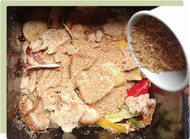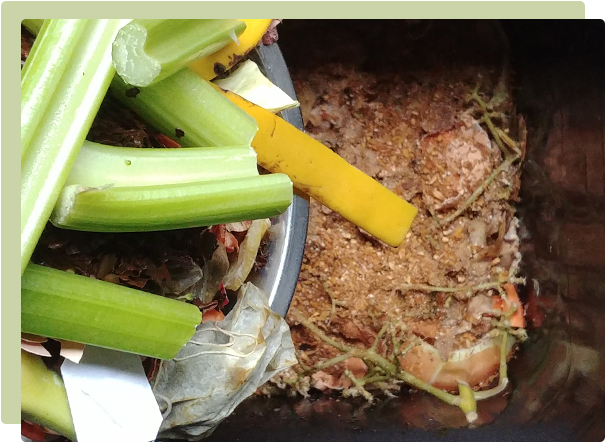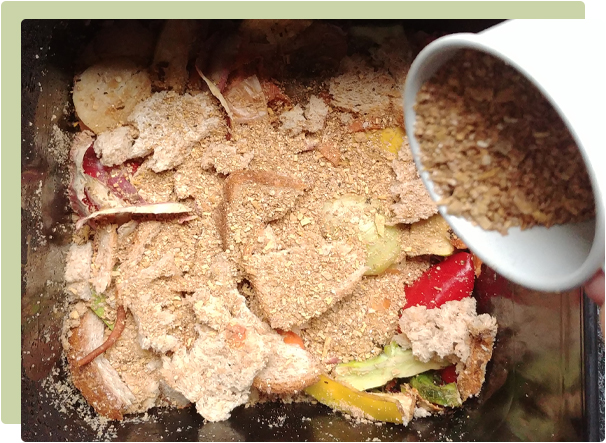Posted by by the Gubba Team
5th Aug 2019
BOKASHI - From kitchen to compost in a matter of weeks!
In this article: Bokashi - What is it?, The Bokashi Process, Bokashi Advantages, Bokashi Systems available at Gubba

Not so long ago most homes had compost heaps in their own backyards. These days when garden space and free time are decreasing, yet our desire to recycle and do good increases, we need to find ways to efficiently, easily and responsibly dispose of our household waste.
Compost bins, worm farms, chickens - they're all great ways of composting and consuming kitchen scraps...but Bokashi, now that's raising the bar altogether. Why you ask? Because in a matter of weeks a good Bokashi system will transform your household scraps into lovely compost, saving you time and effort. Plus you can also add more things to it - like meat and fish! Read on to discover Bokashi for yourself...
Bokashi - What is it?
Bokashi is a Japanese term, meaning ‘fermented organic matter’ and is the basis of the bokashi systems that we sell. The fermentation process basically pickles the food waste, rather than allowing it to decay like with regular composting. This means that you can recycle and compost a wider variety of food scraps and take care of more of your kitchen waste.
In addition to the usual fruit and vegetable scraps, coffee grounds and tea bags, Bokashi composting systems allow you to add many other food waste products that are not compost bin or worm farm friendly like citrus peelings, onions, bread, meat and fish (both raw or cooked) and cheese. Pretty much anything and everything!
The Bokashi system speeds up the whole composting process - up to 50% quicker than regular composting.
The Bokashi Process - How does it work?
The Bokashi compost system uses bins or buckets nested on top of each other with a lid on the top bin. It’s an anaerobic composting process which means the breaking down of food requires no oxygen, unlike regular compost heaps that need turning over and aerating to break down the organic matter.
Bokashi composting requires a special sprinkle (a sawdust-like product) or a liquid spray that contains a whole lot of beneficial microorganisms - a bit like a yoghurt culture that ferments the waste. Food scraps are added to the top bin in layers and squished down with a potato masher or spoon to remove as much air as possible in between the layers. Sprinkle or spray is then added on top of the waste.
The top bokashi bin has holes in the bottom that drain liquid as the products ferment into the bottom bin. This compost juice can be diluted and applied to the garden as a liquid fertiliser.
Keep the bins in a warm dark spot, like the corner of your laundry or garage, or in a sheltered, shady spot outside, but close enough to your kitchen to make it easy and convenient to fill. When the bin fills to the top, secure the lid tightly and stand for 7-10 days in summer or up to 14 days in winter - and voila! Your bokashi compost is ready for the next step.
The fermented food is next buried in the garden in a trench, or it can be added to your compost bin with other organic matter. The beneficial bacteria in the soil will continue to break down the food waste, and within 3-4 weeks all of the food will have decomposed. This is so much faster than regular composting which can take several months to decompose matter depending on the climate conditions.
Bokashi when first fermented is quite acidic and very potent, so it’s important that the waste when initially buried does not come into direct contact with plant roots, and any liquid is diluted properly (2 tablespoons per 5 litres of water for established gardens and house plants, or 3-4 tablespoons to 5 litres of water for trees and shrubs). The liquid certainly packs a real punch so apply directly to the soil and avoid contact with foliage.
Super interesting fact: The bokashi liquid is so full of beneficial goodies the undiluted liquid can be poured into toilets, septic systems, and bathroom and kitchen sink drains to prevent algae build-up and odours.
Key advantages to using a Bokashi Bin
No mess, no foul smell and no pests! The most beautiful thing about Bokashi bins (yes composting can be beautiful!) is that they are a fairly contained system and the food only sits in the bucket for a couple of weeks before it’s buried. And because the food is not decaying, all the usual foul gases and pongs that come from normal compost aren’t present. Instead, there’s an almost sweet, malty smell as the waste ferments.
Decreased composting time – up to 50% quicker than traditional composting. A standard Bokashi bin in a 3-4 person household will take 1-2 weeks to fill. Then it sits for a little over a week, and once buried converts all food waste into luscious compost within 3-4 weeks. That’s 6-8 weeks in total from the kitchen to compost!
Easy to use, requiring no mixing and produces a very natural pour-on liquid fertiliser as well as physical compost
No garden space required for a compost heap or worm farm boxes - Bokashi buckets are so compact (and because they don’t smell) you can easily keep them inside.
Gubba staff tip:
It’s a good idea to have two Bokashi Bin systems. When one fills you can start on your next one. By the time that one fills the first one will be emptied into the garden and you can start over again!
Want to know more?
Want to know more about getting the most from your Bokashi Bin? Read our guide to Creating the Perfect Bokashi




























